America would not be what it is today—nor would Mexico or Guatemala—if not for the existence of a culture that, since 2000 BC, has left its legacy and wisdom in this privileged, warm corner of the Atlantic, better known as the Caribbean Sea.
The Mayan civilization played a vital role in the development of human knowledge, with remarkable contributions in writing, mathematics, astronomy, the creation of one of the most accurate calendars in history, agricultural techniques, and of course, architecture.
It’s precisely this last element—the magnificent Mayan architecture, so well preserved across Mexico’s Yucatán region—combined with turquoise waters, idyllic beaches, and rich gastronomy, that makes the Riviera Maya one of the most sought-after destinations on Earth.
You can visit this stunning stretch of the Americas to swim, dive, sunbathe, relax on the beach, enjoy incredible food and drinks, sail, dance, and, of course, explore the remains of this pre-Columbian civilization.
Mexico is vast and diverse, so it’s best to divide it into regions to make the most of your visit—just like we suggested in our general guide to this North American country.
Now, within the Caribbean and South America section, we bring you a detailed guide to the Riviera Maya, one of the most popular tourist destinations on the continent.
Stretching along the eastern coast of the Yucatán Peninsula—from Cancún to the border with Belize—this region offers a perfect combination of pristine beaches, underwater wonders, breathtaking Mayan ruins and pyramids, colonial towns, and a unique gastronomy that merges ancient Mayan heritage (cochinita pibil, poc chuc) with Yucatecan specialties (panuchos, salbutes) and beloved Mexican staples like tacos, tamales, and ceviches.
Tempted yet? Whether you’re traveling by rental car, ADO bus, shared minivan, motorcycle, bicycle, or even by boat, the Riviera Maya can adapt to any schedule, budget, or travel style—and we’ll show you how.
Follow the coastline north from Playa Blanca and Holbox Island, then head south via Valladolid and the iconic Chichén Itzá pyramids, through Isla Mujeres, Cozumel, and the Mayan ruins of Cobá and Tulum. Explore underground caves and freshwater cenotes, the lush wilderness of Punta Allen, and finally, the stunning seven-color lagoon of Bacalar.
And let’s not forget the people—an incredible cultural blend of Indigenous heritage, Spanish influence, and Afro-Caribbean rhythm. This vibrant mix is now the essence of Yucatán culture: the living soul of a nation of over 130 million.
It goes without saying how important it is to travel to Mexico with a good insurance. We were the first ones to offer the famous 5% discount on IATI Insurance, but you also have it available with Heymondo Travel Insurance.
Follow the links bellow to get a discount on their website:
You can travel to the Riviera Maya year-round, but the ideal season is between December and May. During these months, the weather is mild, the rains are rare, and the beaches are at their best—without the crowds.
From June onwards, the rainy season begins, bringing the possibility of tropical storms and, in rare cases, hurricanes.
Another factor to consider—especially for beach lovers—is sargassum, the brown seaweed that ocean currents carry to the shores between April and September.
While it doesn’t always show up, it can disrupt swimming and snorkeling when it does. The state of Quintana Roo has responded by installing underwater nets on certain beaches to limit the impact.That said, there’s no bad time to visit. Even if one day of your trip is affected by rain or seaweed, there are plenty of inland activities to enjoy: from archaeological sites and colonial towns to gastronomic tours, local festivals, and vibrant nightlife. You definitely won’t be stuck in your hotel.
Nowadays, finding hotels, guesthouses, or restaurants in Mexico with free Wi-Fi is the usual trend, although there are also those who wish (or need) to have continuous internet connection.
To help with that, we’ll tell you how to get a Mexico eSIM and make the most of their affordable prices. And now, we also provide information about Mexico’s eSIM with unlimited data.
The main gateway to the Riviera Maya is Cancún International Airport, located about 16 kilometers from the city. It’s one of Latin America’s busiest airports and Mexico’s main international hub, receiving over 30 million passengers a year, many of them from abroad.
Most airlines from the U.S., Canada, Europe, and Latin America offer direct or connecting flights to Cancún, making it an accessible and competitively priced destination—especially in the off-season.
Once you land, you can easily reach Cancún or Playa del Carmen—the region’s two main hubs—via private transfers, official taxis, ADO buses, or car rentals.
If you’re already in Mexico, most domestic visitors also fly in, thanks to excellent air connectivity. But it’s equally possible to reach the area by long-distance bus or private car, with good (albeit sometimes pricey) highways available.
In the past two years, some sections of the Mayan Train have become operational. Once complete, it will connect Chiapas (via Palenque) to Cancún, crossing the entire Riviera Maya.
At present, the train line connecting Cancún to Tulum is functional (Caribbean section 2), while other sections are still under construction.
Travelers coming from other popular Caribbean or Central American destinations—like Cuba or Costa Rica—can often find convenient short- or medium-haul flights to Cancún.
From Guatemala, the other country with a rich Mayan legacy, the best route (which I personally took) is by bus or minivan, crossing Belize and entering the southern Riviera Maya via Chetumal, capital of Quintana Roo.
Chances are you’ll arrive in Cancún, one of the world’s major tourist airports. With its extensive flight network, you’ll likely find a great fare.
As a welcome, enjoy a plate of cochinita pibil, the region’s most iconic Mayan dish, accompanied by a margarita or cold local beer—whether from a street vendor or a beachfront restaurant.
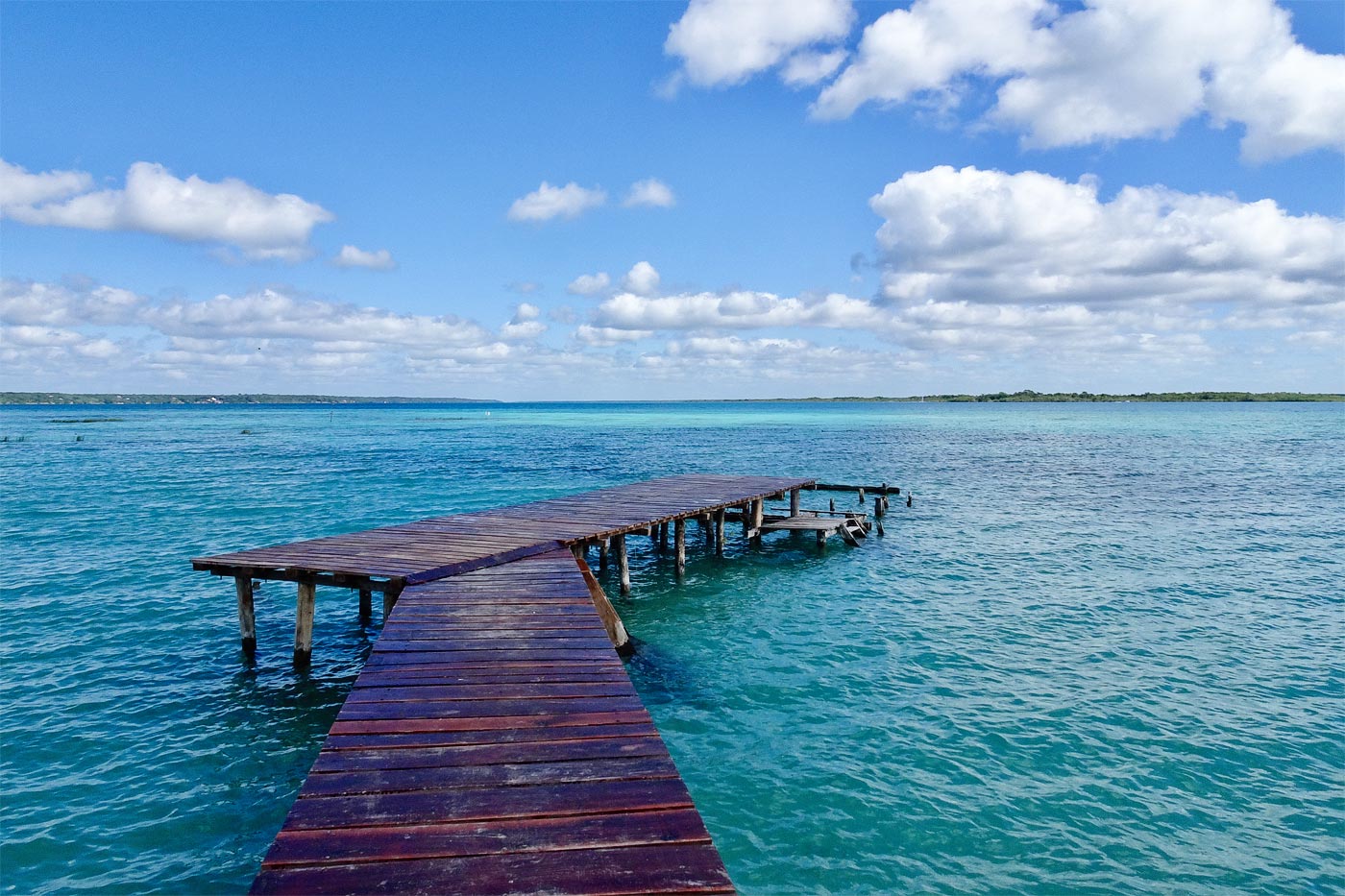
And now, our journey truly begins. This guide focuses on the Mexican Caribbean coast, running north to south through Quintana Roo, with detours inland to archaeological sites and colonial towns.
Don’t miss the nearby and beautiful Caribbean islands (Cozumel, Isla Mujeres, Contoy, and Holbox) which we cover in a dedicated guide. We’ll organize the trip geographically, so you can tailor it to your time, interests, and preferred mode of travel.
Just north of Cancun, Isla Blanca Beach is a quiet, narrow stretch of sand worth visiting. Another great option is heading to Chiquilá to catch the ferry to Holbox Island—detailed in our island guide.
As you head back toward the center of Quintana Roo (not the capital—that’s Chetumal), plan a stop in Valladolid, a large town with some of Mexico’s finest Spanish colonial architecture.
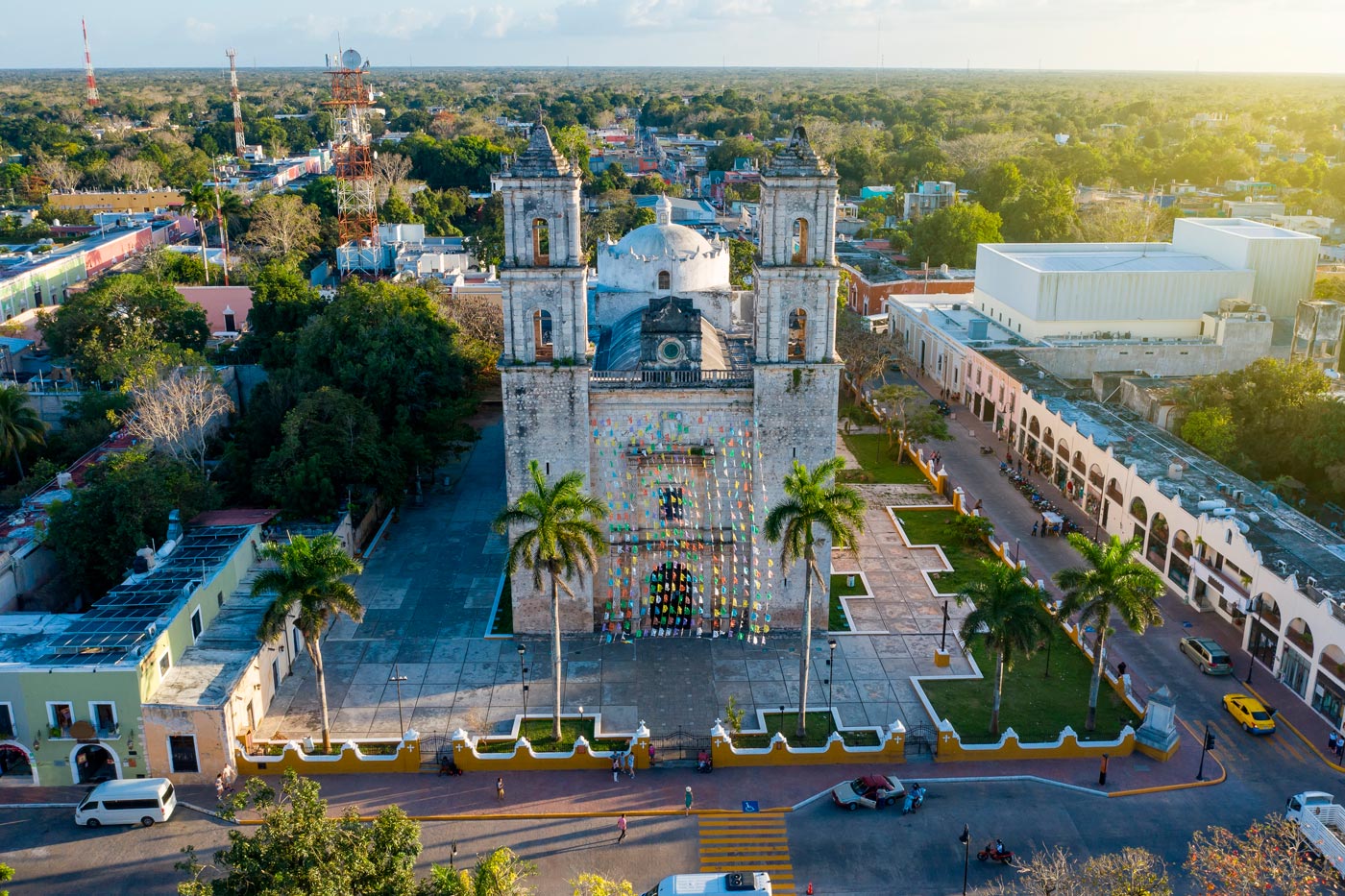
Despite being one of Mexico’s designated pueblos mágicos, Valladolid is often overlooked by travelers rushing straight to Chichén Itzá. But it’s worth spending a night here, enjoying a charming hotel (some are surprisingly affordable), wandering the streets, and watching the 9 p.m. light show at the Franciscan convent that narrates the history of the Yucatán.
The next day, head straight to the most famous Mayan site in the world—but be aware: the highway is quite expensive, designed to accommodate the thousands of all-inclusive tourists pouring in from Cancún every day.

Chichén Itzá is stunning and well preserved, but it’s also pricey and always crowded. For a more serene experience, visit late in the day, and admire the iconic Pyramid of Kukulcán beneath the stars.
Don’t worry—there are other Mayan ruins in the Yucatán, better or worse preserved, but less touristy, and equally authentic. More on those soon. You might also consider a trip to Mérida, the beautiful, safe, and welcoming capital of Yucatán state—but we’ll save that for another article, because it deserves its own.
So, we’d better head back along the highway toward Playa del Carmen. But before that, we could take the chance to enjoy one of the best cenotes in all of Yucatán.
Historians, geologists, planetary scientists, and many other “…ologists” tell us that around 65 million years ago, a meteorite about 10 kilometers in diameter struck the Earth, wiped out the dinosaurs, and left us with these natural wonders known as cenotes—or “caverns of water and abyss” in the Mayan language.
These are deep, freshwater pools where sunlight filters in from above. Swimming in them, freediving through them, or exploring their underwater caves, stalactites, and ledges is absolutely breathtaking.
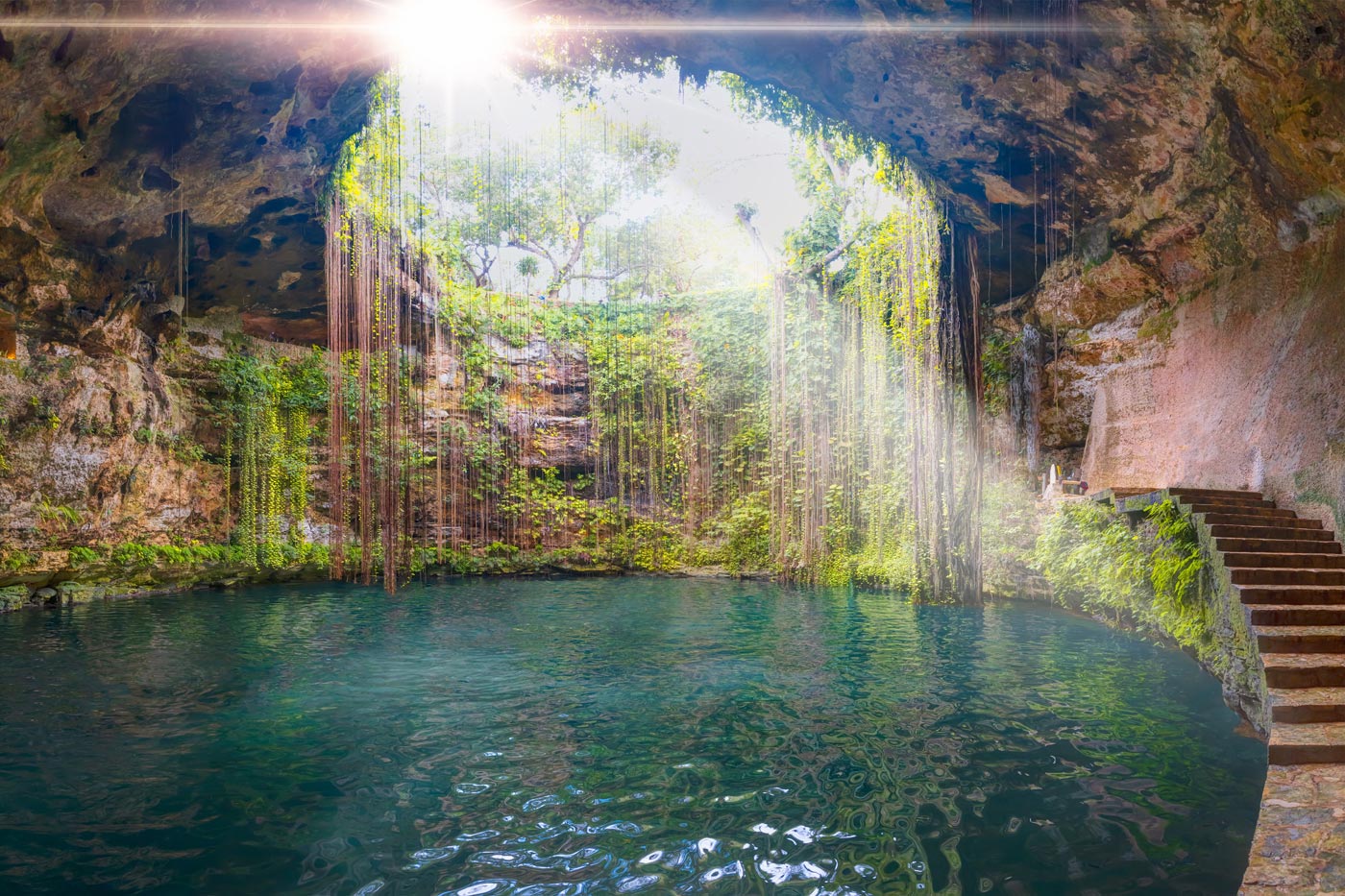
During the year I spent in Mexico, I learned to freedive in some of them. It’s an incredible feeling—to let yourself sink like a stone along the descent line in the clear water, only to stop, out of instinct or caution, when your lungs gently remind you it’s time to head back toward the light.
I recommend visiting Cenote Ik Kil, located just three kilometers from Chichén Itzá. But there are so many throughout Yucatán—they say more than 2,400, many of them open to visitors—that you won’t want to miss the chance to experience at least a few during your trip through the Riviera Maya.
On our way back to the Caribbean, we stop in Playa del Carmen—a destination that feels overcrowded. Its beaches aren’t as stunning or turquoise as those in Cancún or elsewhere along the Riviera Maya. But it’s a great base for enjoying good food, partying, dancing late into the night, and heading up to Puerto Morelos.
Puerto Morelos is a peaceful, slow-paced coastal town with dreamy beaches and plenty of hotel options—perfect for a day of relaxation, snorkeling, cenote visits, and indulging in delicious seafood, ceviche, or aguachiles.
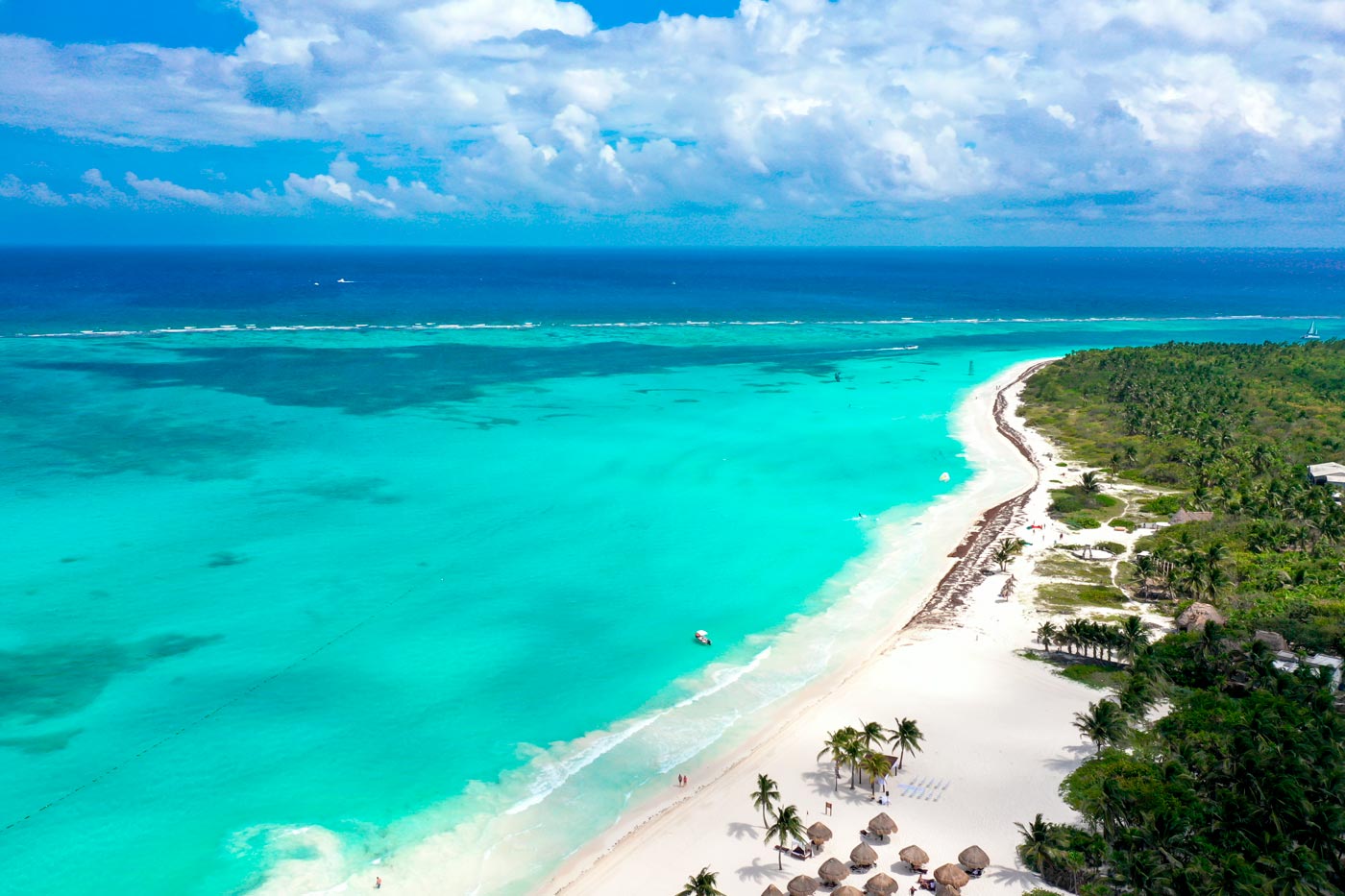
On the road to Playa del Carmen, where you can catch the ferry to Cozumel (the most authentic island in the Mexican Caribbean), there are some worthwhile stops: Playa del Secreto, Playa Paraíso, and Punta Maroma. All are quiet and enjoyable, with a distinctly Mexican atmosphere and just the right touch of tourism. I traveled the entire route by motorcycle over several days and loved it, but you could just as easily enjoy it in a day or two.
Once you’ve had your fill of Playa del Carmen’s energy, it’s time to head south toward Tulum, where the Riviera Maya’s landscape begins to shift. First up is Xcaret, a popular amusement park—loved by some, not so much by others. I haven’t been myself, but I’ve heard from many it’s a fun option for families or groups of friends, so I’ll leave it for you to decide.
Further south, I recommend a day in Akumal, with its wonderful beach, underwater life, nearby cenotes, and snorkeling with turtles (please—do not touch, chase, or stress these gentle marine creatures with their kind faces and eyes).

And then, we arrive at Tulum—no longer what it used to be (sorry for the cliché). It’s true that 15 years ago, this beach paradise was largely undeveloped. But the relentless growth of tourism in the Riviera Maya has pushed the crowds southward.
Tulum’s long, idyllic beach is now over 90% occupied by hotels and private estates, most of which block access to the shore. Still, it remains a place full of charm and things to do. It’s worth stopping here for a few days.
Its seaside Mayan ruins are small but truly special—perched right on the turquoise waters of the Caribbean. The town (now more like a small city) has kept its low-rise profile. It’s not urbanized like Cancún or Playa del Carmen. You can easily explore it on foot or by bike.

Accommodation options are abundant—from budget hostels for backpackers to luxurious four- and five-star villas. There’re countless places to enjoy the best Mexican food. Don’t miss the outstanding El Camello Jr. for seafood or Antojitos La Chiapaneca for local bites. Tulum also offers vibrant nightlife—you won’t get bored.
I recommend walking a little further from the touristy center to soak up the local vibe, with small eateries and street vendors. Reaching the beach can be a bit tricky—ask locals about public access points, since most of the coastline is private.
Once you find a narrow path to the beach, you’ll be rewarded with spectacular beauty. But beware: if you decide to snorkel on your own to see the turtles and rays near the reef (just under a kilometer out), you might get into trouble.
I tried it without taking the short boat tour, and they literally chased me down in a small boat. Three men threatened to report me for swimming in open water without paying the “revolutionary tax.” I swallowed my pride, apologized, and promised never to do it again.
From Tulum, I highly recommend visiting Cenote Dos Ojos, the Cobá ruins, and especially the Sian Ka’an Biosphere Reserve. You can get there heading south by motorcycle, bike, minivan—or by boat from the visitor center, which is what I did: a high-speed ride through mangroves filled with crocodiles and raw, untouched nature.
Eventually, you reach Punta Allen, one of the Riviera Maya’s most authentic and remote spots. It’s a tiny, ramshackle town with boutique hotels and affordable, family-run accommodations. Most residents are fishermen, so you can imagine the quality of the seafood.
They also organize snorkeling and diving trips along the Mesoamerican Barrier Reef—the second-largest reef system in the world, stretching from Cozumel to Honduras.
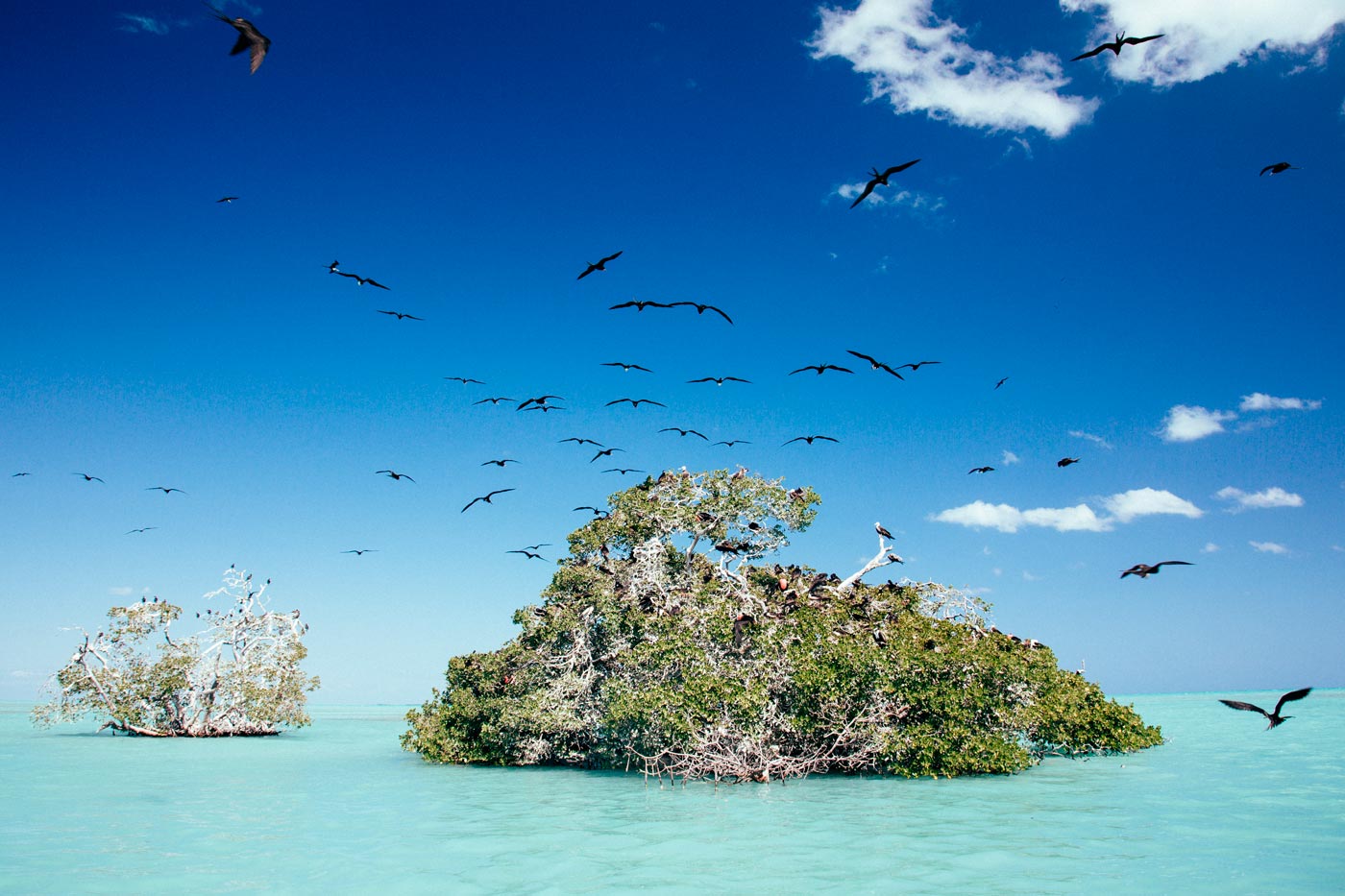
There’s also a bird sanctuary nearby. I was lucky enough to visit San Juan Island, where I saw majestic frigate birds, ospreys, herons, spoonbills, and pelicans—an explosion of color and life reminiscent of Ecuador’s Galápagos Islands.
The highlight was visiting Punta Culebra, with opportunities to snorkel, swim, and relax on white-sand beaches. No exaggeration—if you’re in Tulum, don’t miss Sian Ka’an and Punta Allen.
To leave Punta Allen, you’ll need to return to Tulum. Word of mouth works well—ask around and coordinate with local taxi drivers. I went with Mr. Germán, well-known in town, who found a spot for me and charged the local price.
To continue south, head to the Sharks’ Union office (yes, really), where minivans depart for Mahahual, with a stop in Limones.
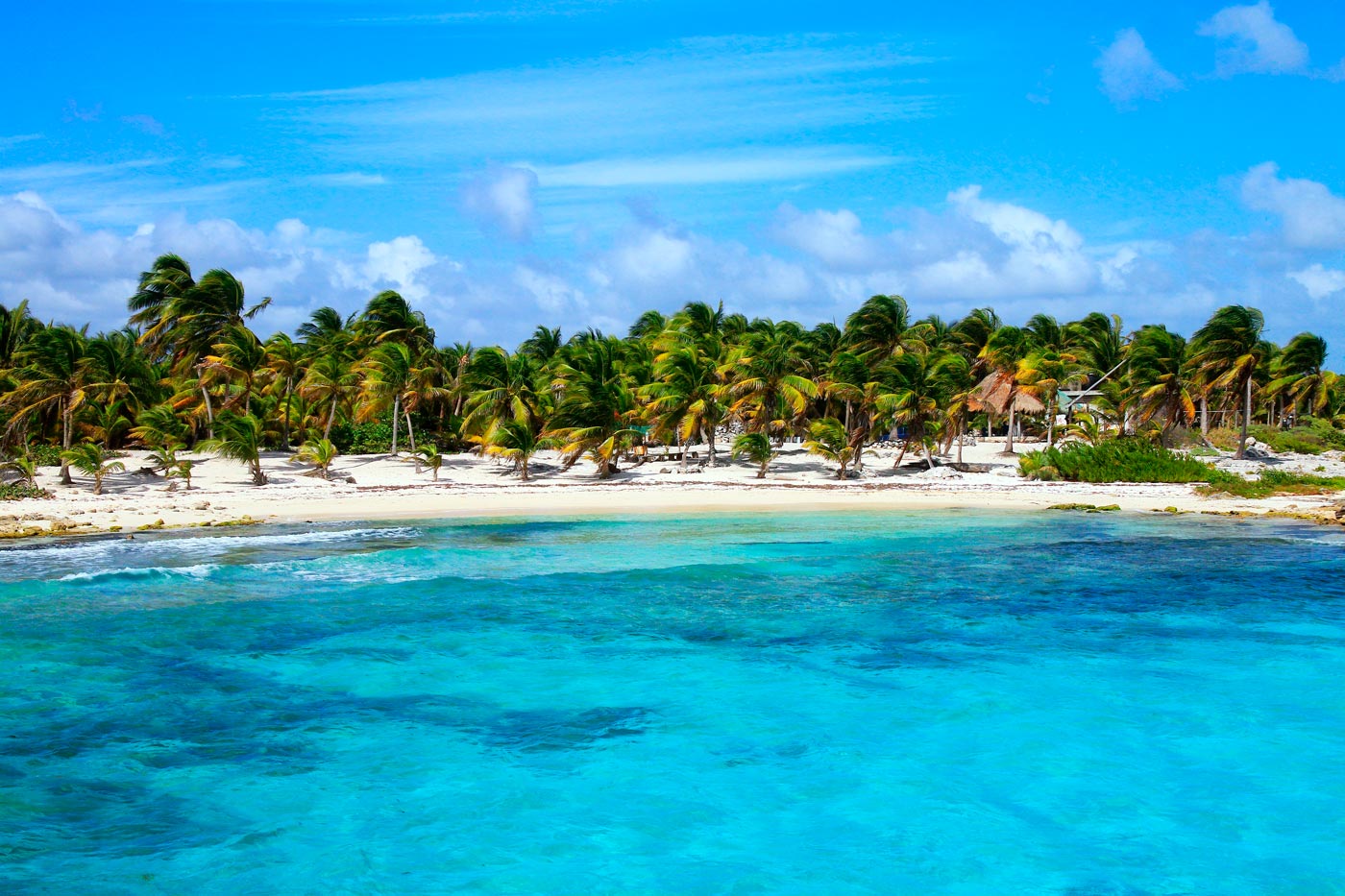
Mahahual was, until recently, a remote fishing village—until one day a massive cruise ship docked, thanks to a newly built pier. Now, cruise tourists pour in several times a week for short day visits.
Even so, Mahahual retains its charm and offers great diving. From here, we near the end of our Riviera Maya adventure, but there’s still a hidden gem waiting near Chetumal and the Belize border.
That gem is Bacalar, a small southern town blessed—by the Mayan gods or some unknown force—with the Lagoon of Seven Colors, one of the most stunning places in Mexico.
A magical town that just a decade ago was barely known, Bacalar has a colonial fort built by the Spanish to defend against British pirates from Belize.

Bacalar reminds us of the small town of Doctor in Alaska, but with the Caribbean climate. The vibe is slow and relaxed. You’ll wander cobbled, paved, or dirt streets, eventually reaching the lagoon, which lies slightly above sea level and thus remains fresh—never touched by Caribbean salt water.
The Lagoon of Seven Colors is crystal-clear and navigable, with shifting hues. You can explore it by sailboat, motorboat, or paddleboard. There are several cenotes nearby: the Witch’s Cenote (dark and mysterious), the Blue Cenote (deep, perfect for freediving), the Emerald Cenote (conical in shape), and the tranquil Cocalitos Cenote.
Bacalar offers plenty of budget hostels (many backpackers come here to stay), casual restaurants, and outdoor activities like swimming, hiking, and kayaking—even to the rapids that feed the lagoon.
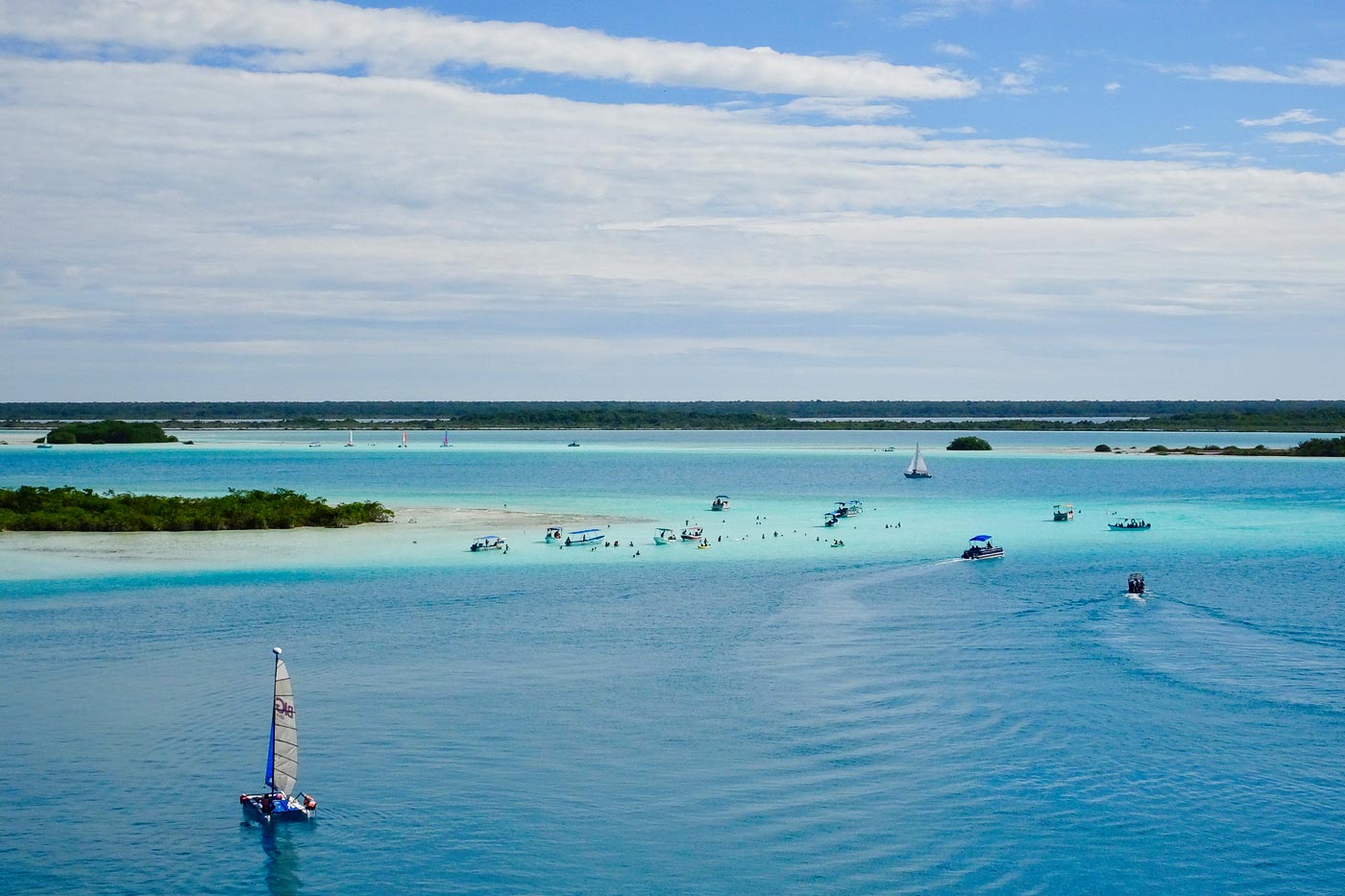
Locals are proud that the lagoon thrives thanks to stromatolites—ancient, rock-like organisms that photosynthesize and generate oxygen.
Bacalar is the perfect place to end a Riviera Maya trip. Days are peaceful and full of activities; nights are lively, with bars and nightclubs (antros) playing cumbia, salsa, rock, and reggae.
They say a crocodile colony lives around the lagoon—but never near the tourist areas. In nearby Chetumal Bay, Quintana Roo’s capital, 150 manatees still thrive.
Another attraction is Bacalar’s Mennonite community, which preserves strict traditions, selling farm products, cheese, and bread. Anti-technology, they still use horse-drawn carts.
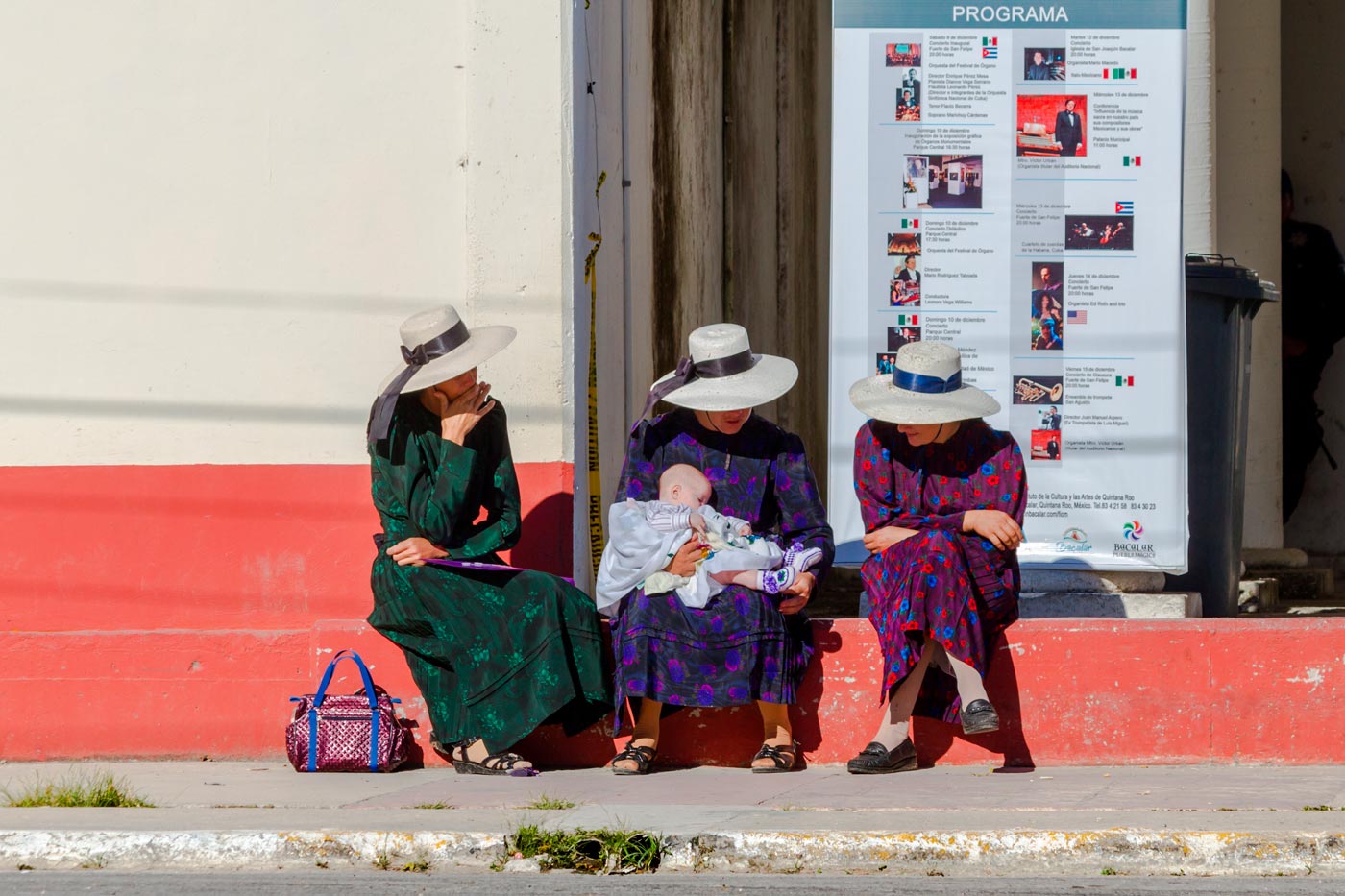
They came to Mexico from Europe after being persecuted. They’re polite but reclusive, rarely mixing with locals. They speak mostly Germanic languages.
If we’re able to tear ourselves away from the charms of Bacalar and still have two days to spare, the best option is to head toward the northern border of Guatemala and reach Xpujil, a superstitious town plagued by goblins and strange gods that almost everyone has seen. Locals will confirm it without hesitation: they’ve seen and know all kinds of stories about these tiny beings that only they — and there are many of them — can see.
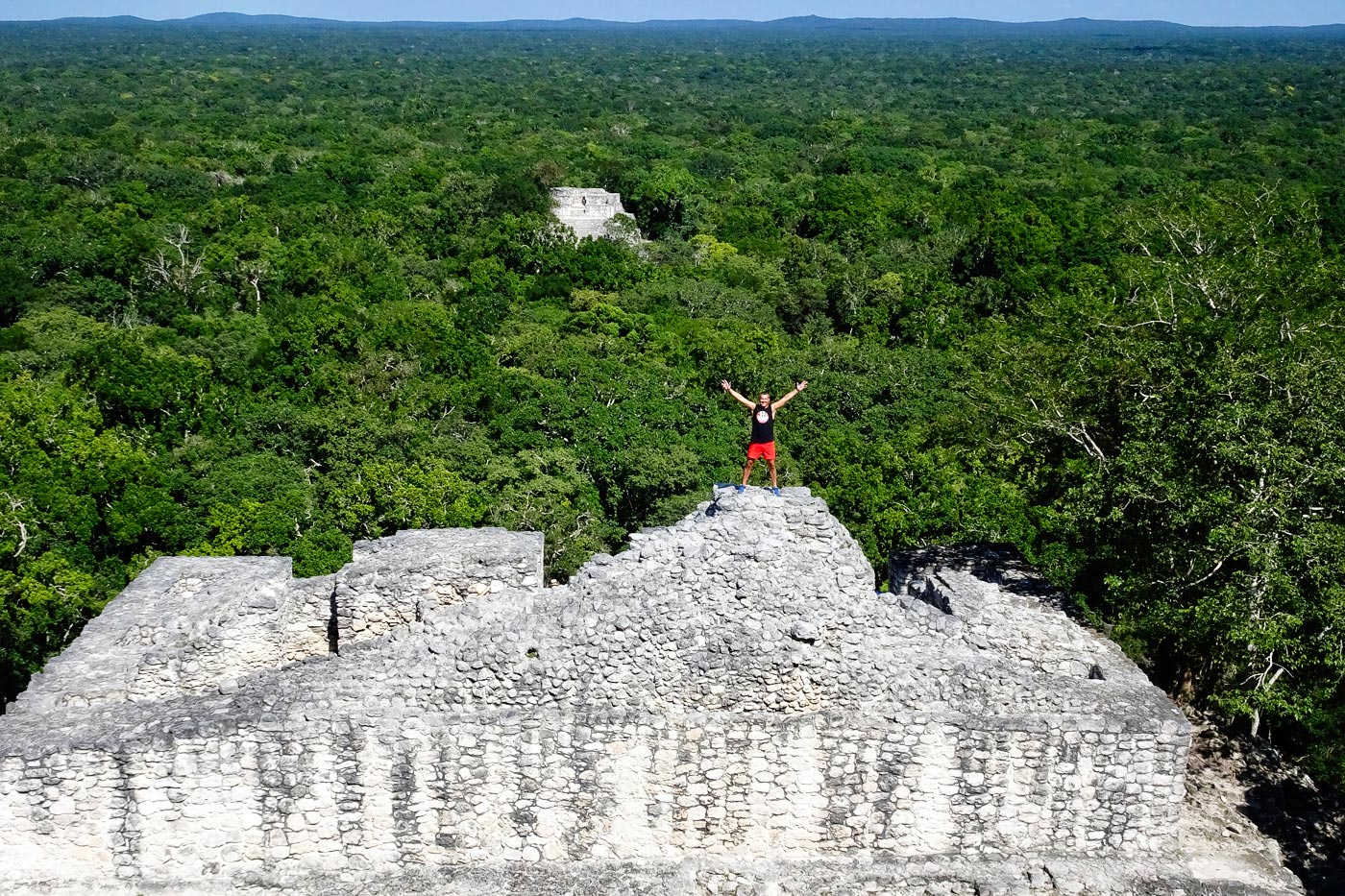
Very close by are the smaller sisters of the impressive Mayan pyramids of Tikal, the most important in Guatemala. These are in the Petén region, and here, just across the border in southern Mexico, lie the Calakmul pyramids, of which only 10% to 15% have been uncovered.
They’re awe-inspiring, and almost no one visits them due to their remote location. They belong to the state of Campeche, and I had the chance to visit and climb them (since they aren’t touristy or overcrowded, you’re allowed to climb everywhere).
This is where we could very well end our trip to the Riviera Maya, which, as you can see, is much richer and more captivating than the usual tourist circuits of Cancún, Playa del Carmen, and the all-inclusive resorts.
Given the number of tours and activities available in the Riviera Maya, we’re sharing the most common ones here while preparing a full article:
A full-day guided exploration of the UNESCO‑listed Chichén Itzá, swimming in a cenote, tasting local cuisine in Valladolid.
Discover green sea turtles in their natural environment, along with tropical fish, vibrant coral reefs, stingrays, and other seasonal marine life. Join a guided tour that keeps a respectful distance from these incredible wild animals, and capture unforgettable photos of your experience. Family‑friendly and unforgettable.
Cruise to Isla Mujeres and the protected Contoy island; sunbathe, snorkel, and unwind in nature. This tour includes lunch.
Stand on the cliffs of Tulum’s archaeological site overlooking the Caribbean Sea, then cool off in two stunning cenotes—all in one efficient and scenic half-day.
Step into an otherworldly realm of crystal-clear underground rivers and dramatic rock formations on a guided eco-tour through this incredible cave system.
Climb the ancient Nohoch Mul pyramid, kayak through jungle lagoons, spot howler monkeys in the wild, and cool off in a peaceful cenote—all in a relaxed group setting.
Explore the beautiful reefs of Isla Mujeres on a snorkeling tour. Swim through El Farito Reef, Sac Bajo Reef, and the Underwater Museum of Art. Enjoy a delicious meal and relax by the Caribbean Sea.
Explore Chichen Itza from Cancun or Riviera Maya with an expert guide, relax in a cenote and discover the beauty of Valladolid. A tour filled with history, adventure, and authentic Mexican flavors!
Exploring the ocean floor is a fascinating activity, though for many, it can also be a bit unsettling. Simply putting on a diving mask and looking beneath the water reveals a whole new world of colors and unknown forms of life.
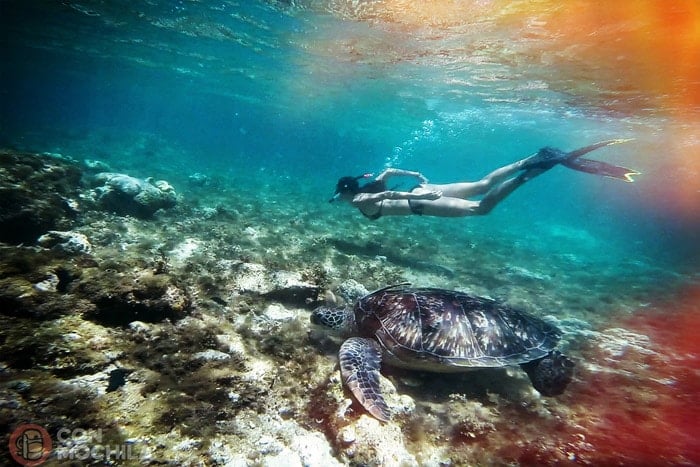
But this world needs to be cared for and respected. So, if you’re planning a trip that might include snorkeling and you don’t want your presence to have a negative impact on the ecosystem, you might be interested in what I share in the link above—what I’ve learned about responsible diving (with or without a tank).
As a major international tourist destination, you’ll find a wide variety of hotels across all price ranges and levels of service. Resort hotels and their flagship product — the all-inclusive — are well known.
There are massive resorts located right on the beaches of Cancún and Playa del Carmen, but in the last 20 years, they’ve spread like fine rain along the entire Mexican Caribbean coast, from Isla Blanca in the north almost to Chetumal, the capital of Quintana Roo, bordering Belize.
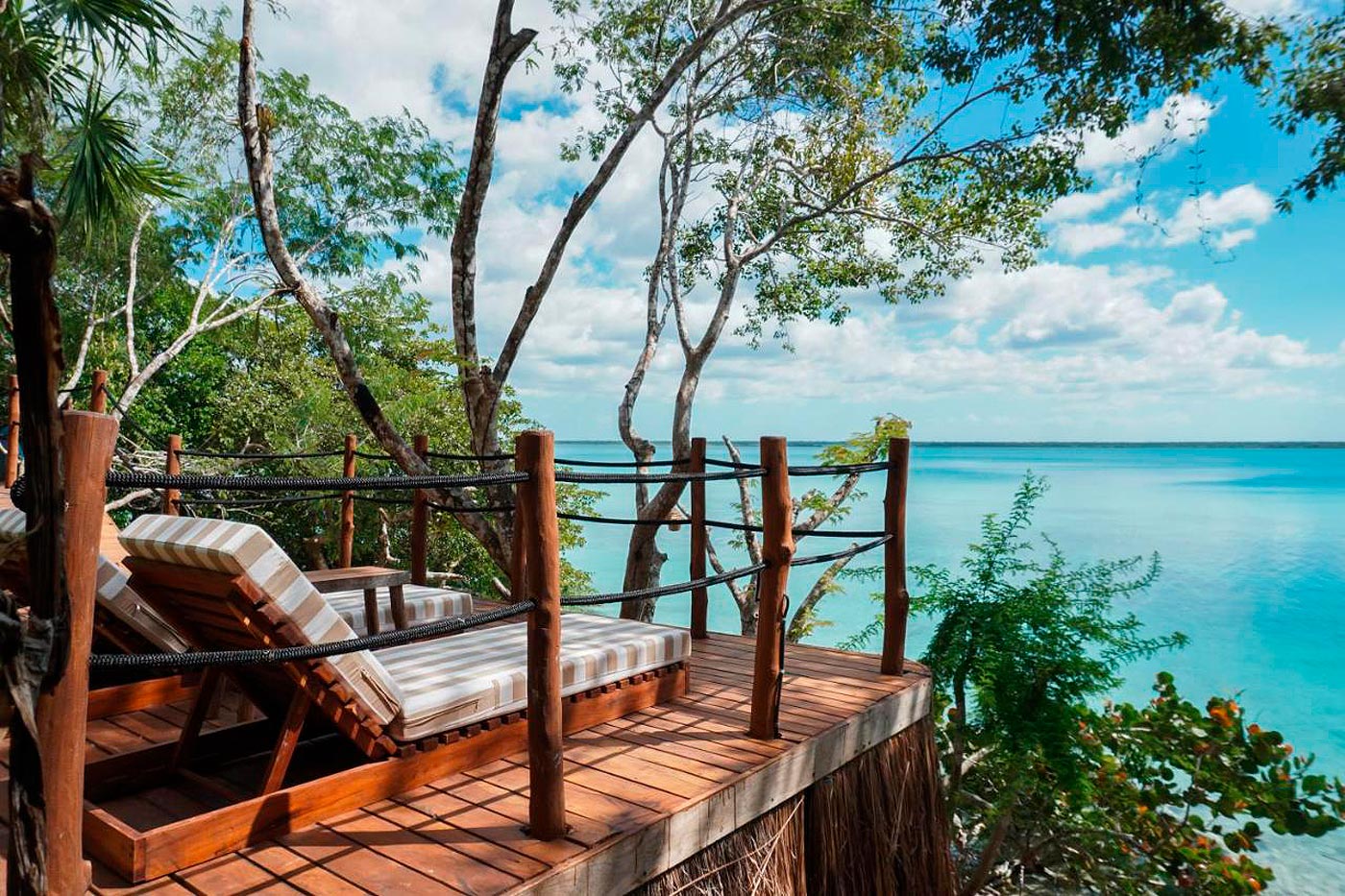
These resorts have also taken over Tulum and its surroundings, although development there has been a bit more restrained. While they often restrict beach access to independent travelers, at least they’ve been built with relatively low height and some respect for the natural environment.
We’ve provided a comprehensive article on hotels in the Riviera Maya to help you decide based on your preferred location. Don’t miss it (coming soon).
People come to the Riviera Maya to enjoy the beach, the sun, the sea, Mayan and Mexican culture, its food, drinks, and popular music, especially cumbia.
At Conmochila, we recommend that you avoid staying in the same place for your entire trip. Whether you’re in an all-inclusive or not, doing so would limit your mobility and your experience of the destination.
It’s much better to book accommodations as you go; there are so many options that booking through your favorite online apps will be easy.
Personally, I’ve explored the area by renting a car and also using buses and minibuses. I’ve sometimes relied on word-of-mouth, asking around upon arrival after doing some online research. You can find charming, local places to stay at non-touristy prices.
So let’s get moving and figure out how to get around. Renting a car isn’t cheap in the Riviera Maya, but if two or more people are traveling, it’s worth it. It’s the most flexible way to get around, and the roads are generally good (since it’s a tourist area), though be cautious — some highways are expensive. One of them connects Cancún with Chichén Itzá and then Mérida, as it’s one of the most touristic routes.
I think renting a car is the most convenient option, but for many, hiring private transportation or using local buses may be more practical. ADO is the leading bus company in the area.
You can also use the countless combis or vans (12- to 14-passenger vehicles) that form a web-like network reaching nearly every corner of the Yucatán Peninsula. They’re usually very cheap, though a bit cramped, but you’ll get to experience authentic local life.
And for the more adventurous, there’s the option of getting around by motorcycle or bicycle.
Always carry cash. Honestly, with the current trend in Spain — which I find amusing after returning from the depths of the Earth — I know several friends who boast about never carrying cash.
Do that in Mexico, my dear friends, and see what happens when you’re asked to pay in pesos at a street stall (where eating is essential and recommended), when boarding a minivan, or when dealing with the police — and you whip out your credit card.
Not only will you embarrass yourself (a very Spanish and European trait), but you’ll also face serious issues and end up running to the ATM, paying an unnecessary fee, and handing out those bills that corrupt police and others find so popular.
When it comes to food and drink, hit the streets — and restaurants if needed. Like many other Latin American countries, Mexico is best experienced by doing what the locals do. Wherever you go, do as the Romans do.
Street food is a must — don’t be afraid. You can watch the tacos or dishes being prepared right in front of you and smell them as they cook. If you don’t trust a place, go to the next. Trying the dozens of stews and dishes that combine Mayan cuisine — such as pib (a traditional underground oven) — with tacos, tortas (sandwiches), salbutes, panuchos, tamales — all packed with meat and saturated oils — is a joy. Still, there are milder and even vegetarian options.
Expect lots of avocado, tomato, vegetables, and seafood — sometimes well-prepared, sometimes not — including ceviches and aguachiles. And always talk to the vendors: ask them to go easy on the sauces or put them on the side so you can decide. Be careful with spicy food in Mexico — you’ve heard it before.

Mexicans aren’t particularly reverent about raw ingredients. They’re not picky about using high-quality tuna or beef — which they have in abundance — because they tend to smother everything in sauces and end up not even noticing what they’re eating.
So, the recommendation is to always let the cook know how spicy you want it, and ask to add the sauce yourself, after it’s served. Do it with a smile and kindness to avoid offending anyone. Mexicans are proud of their culture and cuisine, so it’s best to stay polite and respectful. They’re charming and will understand, even if they think you’re a cautious tourist.
As for drinks and music — in Mexico, anything goes. You’ll find strong beers (chelas) like Negra Modelo and many craft options, along with lighter ones, which makes sense in the Caribbean heat. Tequila and mezcal are best enjoyed as aperitifs with beer, not like brandy after a meal. Of course, you can enjoy these aromatic spirits at any time.
You’ll also find a wide range of cocktails at good prices, plus natural juices and overly sweet soft drinks for non-drinkers. You won’t be lacking a good party at night or a daytime celebration over the weekend. People in Mexico work hard, but the weekend is for enjoying life.
As a visitor, the best thing you can do is let yourself go — don’t hesitate to dance to the cumbia or tap your heels to norteño rhythms or other popular music. You’re going to have an amazing, unforgettable time.
When traveling to Mexico, it’s important to keep safety in mind and follow a few simple rules for your own good. Always be kind, friendly, and respectful to everyone. Mexicans are warm, pleasant, and incredibly hospitable.
However, Mexico is also a country with high levels of violence and organized crime.
In the Riviera Maya, this is almost unnoticeable — everything is very calm, and tourists are rarely affected. But be cautious: many police officers are either complicit or coerced into working for criminal networks, so always be polite and non-confrontational with them. Never break the rules, as resolving any issue will likely involve paying a bribe.
Click on the image and it will take you to a new Google Maps window with all the points of interest to travel around Riviera Maya.